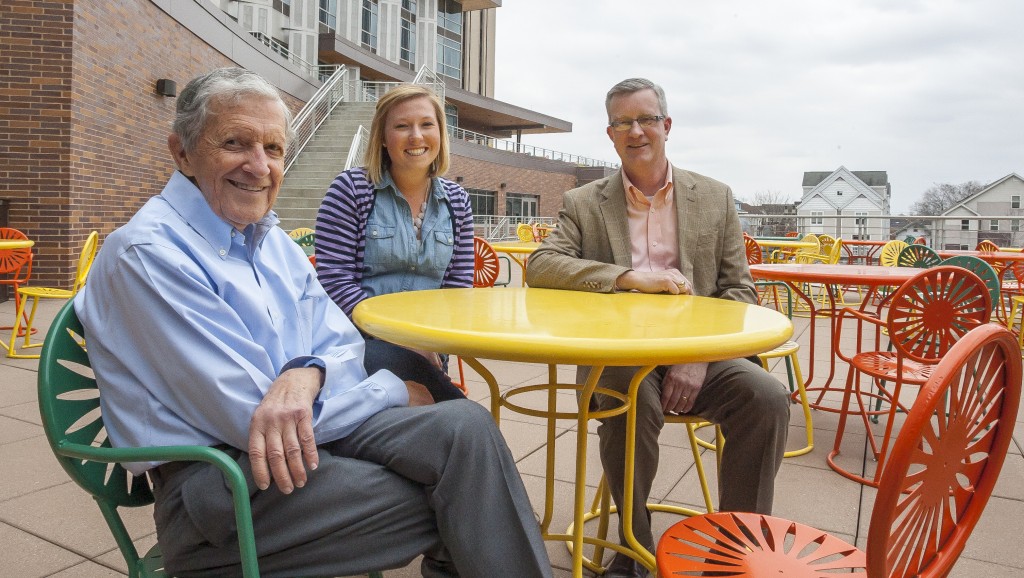Storyteller Series: A Student-Led Union

Our second edition of Storyteller series focuses on student leadership at the Union. Photo courtesy of Brian Ebner.
“This is what makes a university unique, when the students and the faculty can get together and discuss issues outside of the classroom. That is where true learning takes place,” former Union Director Ted Crabb said, reiterating Charles Van Hise’s inaugural address upon becoming President of the University of Wisconsin in 1904, about the importance of a Union for the students.
Since the very idea of bringing a “commons” or “Union” area came about here, on the University of Wisconsin-Madison campus, it was understood that this space would be a home to, for, and about the students. Now, in the Union’s 109th year, current Union director Mark Guthier and past Union director Ted Crabb discuss the importance of student-lead programs as the backbone of the Union.
At its root, the Union is made up of students. Whether that be in attendance at events, in chairs out on the Terrace, or in the very voice of the Union itself. Perhaps Wisconsin Union Directorate (WUD) President Jack Comeau, says it best, “This place belongs to students, and the best thing we can do is keep it alive and going for future students.”
The Wisconsin Union Directorate, the student programming board of the Union, plans and coordinates the events and activities at the Union. “Events and activities, or programing, at the Wisconsin Union really is Wisconsin Union Directorate. It is a combination of committees and clubs that try to put together the best series of programs and events every year for the student body, faculty, staff, alumni, and Union members,” Guthier said. These students not only organize more than 1,000 events a year, but they attract around 500,000 attendees on an annual basis. WUD committees include: Hoofers, Society and Politics, Film, Music, Distinguished Lecture Series, Alternative Breaks, Global Connections, Art, Performing Arts, and Publications. Within these committees are many clubs, groups, and directorate boards that plan the Union events, publications, workshops, and galleries.
Comeau oversees the work of these committees. As a Union that focuses on the the students’ wants and needs, it only makes sense to have a student president who works in conjunction with the Union’s director and staff. As the student’s foremost voice in the Union, the President advocates for every student here, “My main job is to help the students be heard. I’m here to help make the WUD committees successful and fun for students on the board and the students enjoying the events,” Comeau said.
The Union has stayed a relevant source for out-of-classroom learning for more than 100 years by incorporating students’ opinions and lives into the mission of the Union itself. In doing so, the WUD committees have changed and evolved along with the students’ interests, “Events and activities change because the students change—they drive the programming,” Guthier said.
The need for a “third space,” where students feel comfortable to come together, is the pivotal force behind the Union and its student leadership. “WUD is the greatest opportunity to go and try whatever you want in an organized setting and be able to fail. That is the most important thing, we let people try things and if they fail we can work on it or try something new. The Union is students teaching students and students serving students,” Comeau said.
Guthier and Crabb stress the importance of the evolution of WUD committees and strong student involvement throughout the years, even reminiscing on their favorite moments of exemplary student work, “One of the most special events I’ve ever experienced at the Union was the reopening of the Union Theater and the concert by Yo-Yo Ma. There was a synergy between both the audience and the artist that was special. As a Union director, that stirred my heart,” Crabb said.
